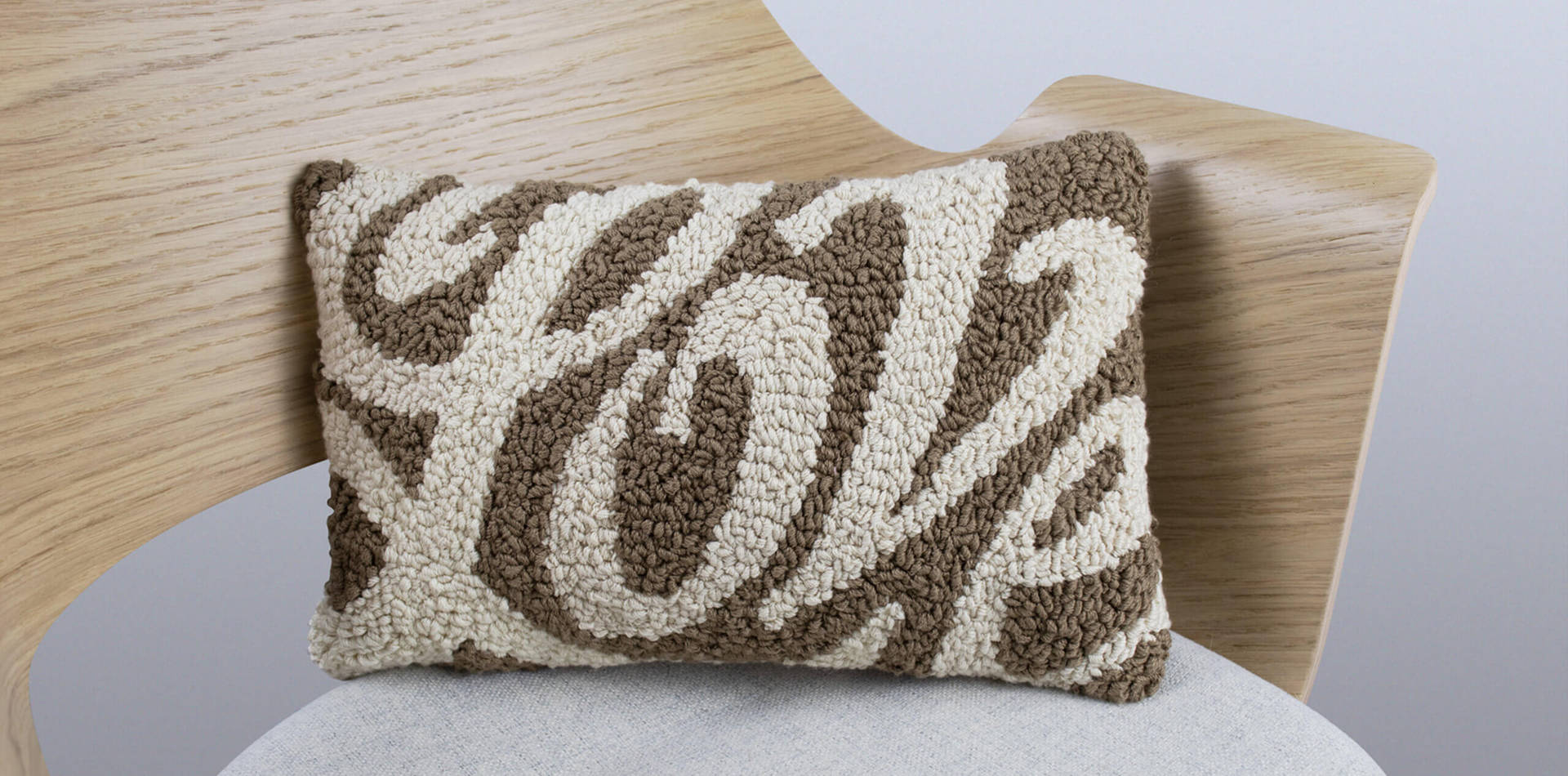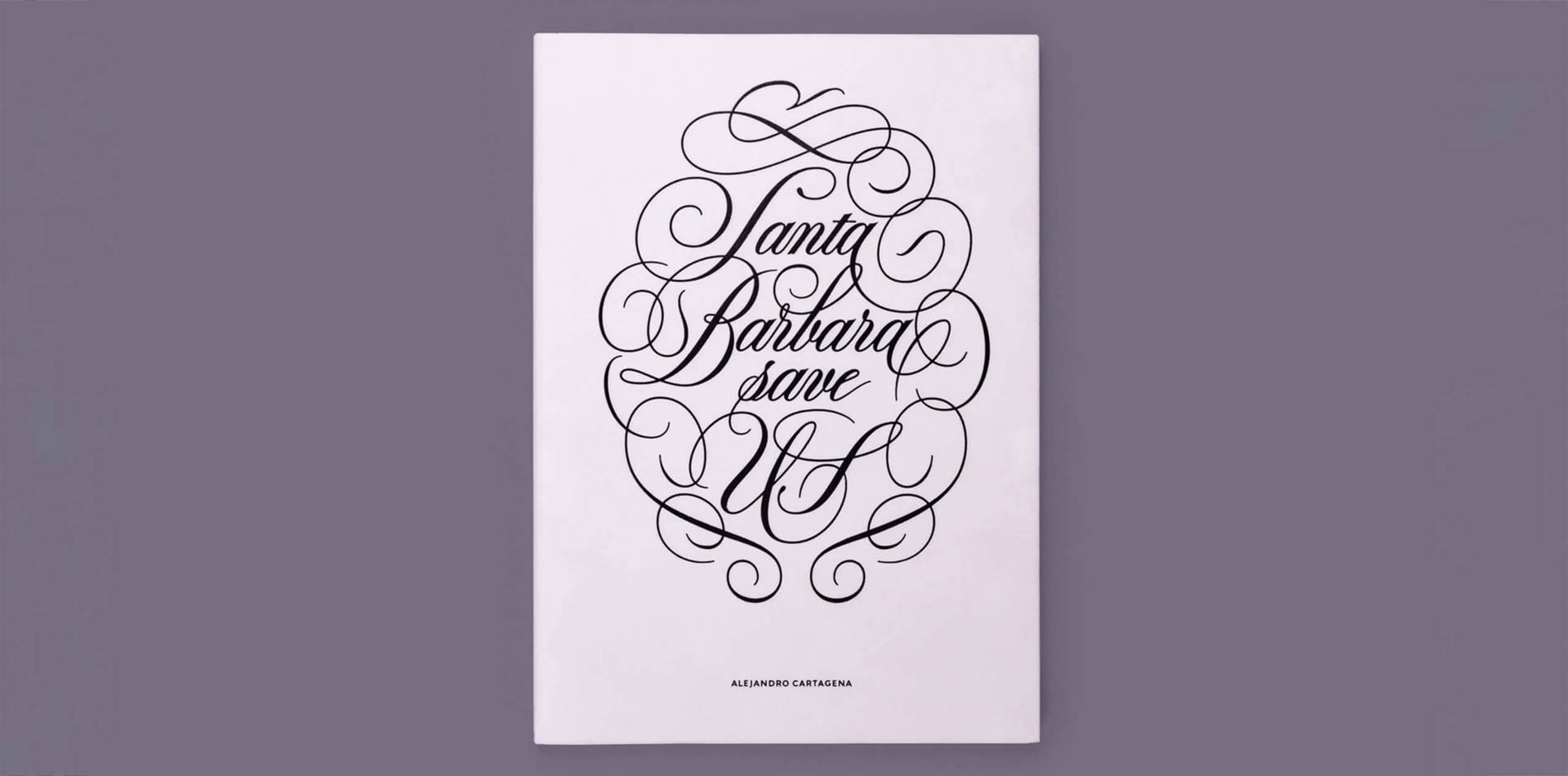Valentina Casali (aka Typophrenic) is an Italian lettering artist and designer whose practice includes sign-painting, letter carving and other craft-related type activities. Together with Marco Goran Romano, she co-founded the award-winning studio Sunday Büro in 2014. The studio specialises in, lettering, custom fonts and illustration for editorial projects, exhibition design and advertising, with clients including The New Yorker, Wired, and Snapchat.
After finishing her studies in graphic design, and whilst working as a freelance designer, Valentina started to learn calligraphy and type design and quickly understood that her true passion lay in letterforms. This is something she never stops developing. She is currently enrolled on the Extended Typeface Design programme Type@Cooper, attending virtual classes in the evenings and at night, because of the time difference. Her dedication to the study of type her led to her teach the ‘Basics of Type Design and Lettering’ at IED Torino and at the Accademia di Belle Arti in Macerata.
Valentina’s love for type moves between graphic design and hand-crafted processes. As well as working digitally, she creates beautifully embroidered cushions using the needle-punch technique under the pseudonym TigerMochi. Other interests include carving letters into stone, sign painting, and practising calligraphy. As she tells us, “I am a multidisciplinary designer, and my work is tightly correlated to the handmade techniques that I use – even projects that are purely digital have a very analogue approach.”
In building her career, Valentina has sometimes had to work hard to be acknowledged as a designer when with her husband and business partner: “Working together with Marco… I had to hustle so as not to be seen as his side-kick, or his assistant. Even when we go to the bank, people tend to address him first and treat me as if I joined him at a later stage despite the business being registered under my name. The reality is that we have the same amount of work experience.” She openly admits to being afflicted with imposter syndrome – something she manages to overcome through a combination of psychotherapy and Buddhism – both things that have helped her gain greater self-awareness and, she believes, allow her to overcome the life’s hurdles.

We caught up with Valentina over zoom to find out more about her creative journey, the figures who have inspired her fascination with type design and lettering, and her advice for new designers.
How did you first become interested in graphic design, type design and lettering?
I think it all started with my passion for photography, which evolved into something broader and eventually focused on the whole field of visual communication. I studied graphic design but never had any formal training in typography, which is why I decided to learn calligraphy, and this was followed by type design.
Describe your career path and how you got to where you are now.
My first job was in a design studio in Ancona, where I worked for about two years as a visual designer. I quit to relocate to Milano, where the first six months were incredibly hard. I didn’t know anyone, nor did I have many freelance projects to show in my portfolio.
Once I began collaborating regularly with a design studio, I was finally comfortable enough to start figuring out what I really wanted to do. I enrolled in the Type Design course at CFP Bauer, followed by Type Week at ISIAin Urbino. At the same time, I attended as many workshops relating to letterforms as I could – calligraphy, sign painting, lettering, letter carving – which is something I still do today . In 2015 I moved back my hometown of Jesi, where together with Marco Goran Romano, my business partner and husband, I carried on working on illustration and lettering projects under the name of Sunday Büro.
In my spare time I experiment with lettering on textiles using the needle-punching technique, under the pseudonym Tiger-Mochi. During the rollercoaster of a year 2020 I also enrolled in the Extended Typeface Design programme Type@Cooper, something that I have been working towards since 2015.
Lettering executed with punch needle and cotton thread, part of the Tiger-Mochi collection available online, personal project.
How would you describe yourself as a designer and your design work / style?
I am a multidisciplinary designer. My work is tightly correlated to the handmade techniques that I use – even projects that are purely digital have a very analogue approach.Letter-carving, sign painting, and calligraphy are at the core of how I approach any project, regardless of its outcome. For me, a project which is purely conceptual cannot exist. I do believe that I have developed a personal style over the years, but I would rather leave the task of defining it and describing it to others!
How has being a woman impacted your career?
It has had a huge impact, especially since I started to freelance in 2013. Working together with Marco (my business partner and husband), I had to hustle not to be seen as his side-kick or assistant. Even when we go to the bank, people tend to address him first and treat me as if I joined him at a second stage, despite the business being registered under my name. The reality is that we have the same amount of work experience. The flip side of the coin is that, because of such struggles, I had chanced to meet other female professionals like myself , as well as many organisations who promote female creatives and business owners.
Cover design for Alejandro Cartagena’s photographic research. The last chapter of a trilogy that follows the cultural turmoil that the US has lived through over the last 4 years. The third volume continues to paint an uncertain present and future.
A lot of people in the creative industries struggle with imposter syndrome and self-doubt. Have you experienced this and, if so, how do you deal with it?
I am an asymptomatic carrier of imposter syndrome! I spent years struggling with feelings of inadequacy and incompetence, mostly when I have worked with established professionals with a long-standing career. I currently follow two strategies to deal with the issue: psychotherapy and Buddhism. Thanks to both, I am able to analyse and understand why some things happen, and give them a label. Once I do that, I can handle the issues and scale them down.
Each day is a challenge, and we can win when we decide not to give up.
Do you have any female role models or mentors who have shaped your career?
Yes, there have been some. Not necessarily mentors but people who have had a big influence on me.
I’m going to name just a few (including some men too): Anna Schettin, Monica Dengo, Michael Sull, Tom Perkins and Eric Marland. I would also add Marco Goran Romano– with whom I share my life and career – because he has always been supportive and encouraged me to have a long-term plan. He’s always seen a potential in me which I sometimes struggle to see for myself.
Masthead design and cover design for the independent photographic magazine RVM; Red issue received an award from the Society of Publication Designers.
If you could go back to the beginning and start your career again what would tell your younger self?
I would tell myself not to waste time on pointless things. To roll up my sleeves and to make choices without worrying and changing my mind. I would also tell the younger Valentina to be more confident and speak up, without worrying too much about the consequences.
Do you have any words of advice for women considering a career in the design industry today?
Two pieces of advice. The first is to be true to yourself and your identity; there is more than one way to live, work, and experience the world. It is hard but possible to make a plan that reflects who we are. The second would be to carry on studying even after university, because we never cease to learn and grow.
Custom font Grotteccini for Gaia Segattini Knotwear, an artisanal knitwear brand founded and directed by Gaia Segattini. The brand is made in Italy, and is sustainable, innovative, and produced in synergy with a manufacturing company of excellence from Le Marche region. Gender neutral garments and accessories made from Italian fine-quality leftover yarns, with creative and contemporary design and distinctive style.
Which female creatives have most inspired you?
There have been plenty of creatives who have been role models for me. Paula Scher, Suzana Licko, Louise Fili, Marian Bantjes and Jessica Hische were fundamental in helping me to understand the direction I wanted to go in design. I really admired them while studying and still do now, because they managed to have a strong presence in the industry without ever being labelled professionally as ‘female designers’. They are known simply as ‘designers’. Over time there have been many more like them of course; the industry nowadays is thriving and full of incredible talent worldwide.
Can you recommend 3 other female designers currently working in the industry who you find inspiring!
Alessia Mazzarella: type.land
Giada Montomoli: giadamontomoli.com
Leta Sobierajski: letasobierajski.com
Follow:
Visit:
Article by Laura Bertinelli
Laura Bertinelli is one of our DesignbyWomen collaborators who has curated and written a series of features celebrating Italian female designers.





